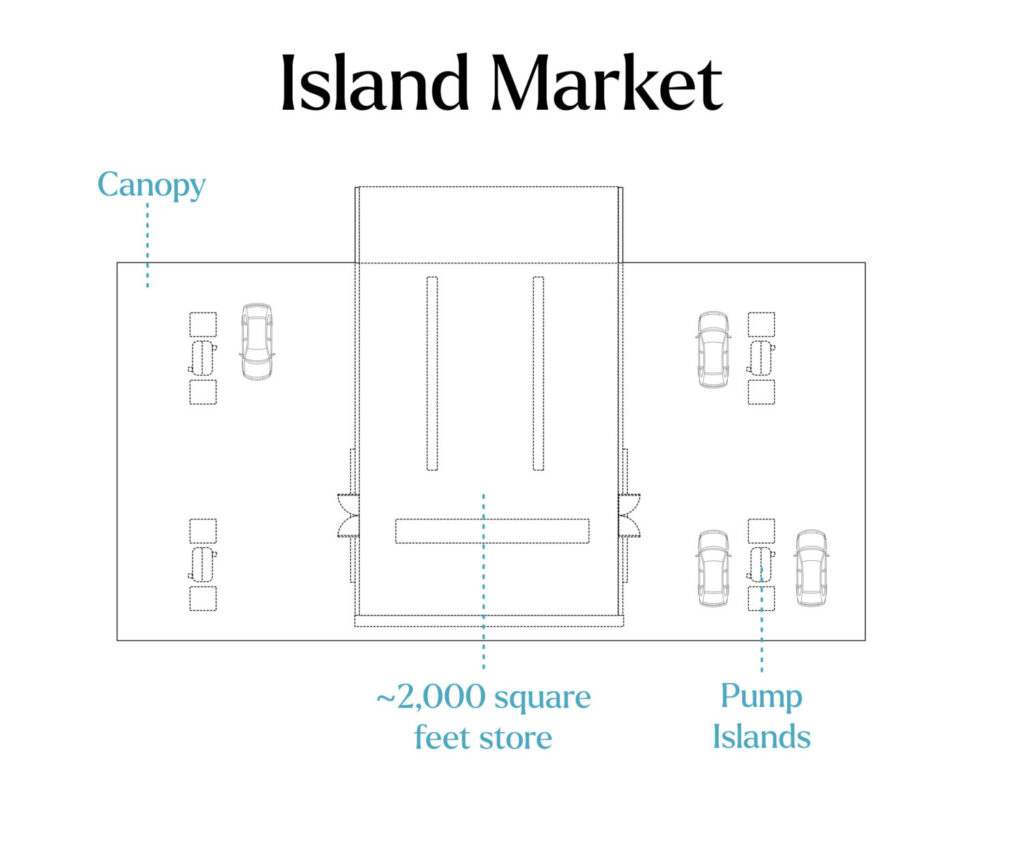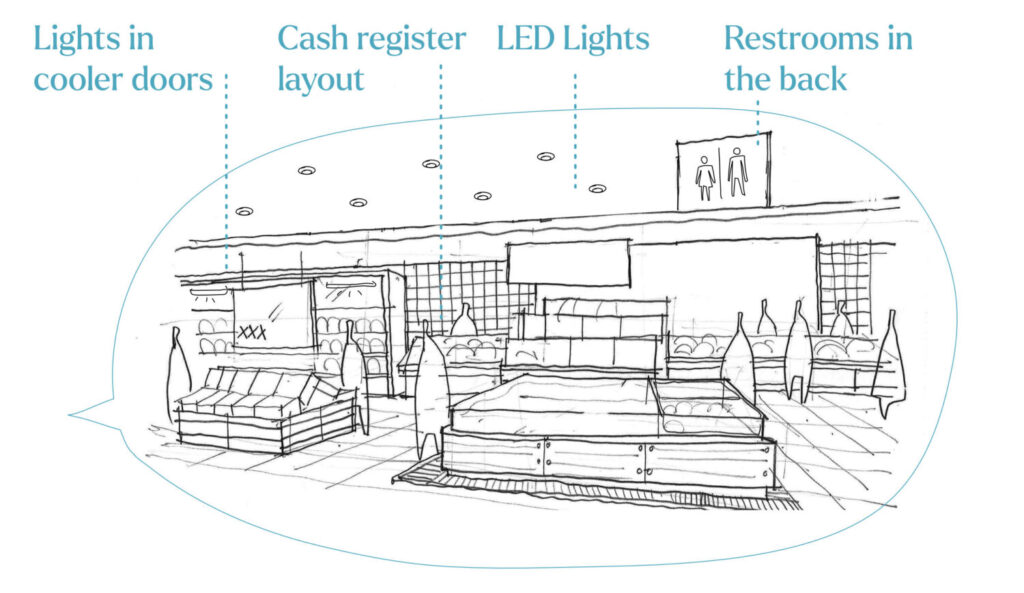How can we redefine convenience in Indian Country?
Convenience stores have played a major role in Tribal economies over the years providing a consistent source of revenue. However, when it comes to adapting to the new market realities during and after the global pandemic, the C-Store industry as a whole is behind the curve. There is an opportunity for Tribes to look through a new lens and really answer the question: How can we redefine convenience in Indian Country?
Several new concepts have evolved to better serve Tribal communities. Design is one area where new approaches have led to better service. Ask this question: What’s the best design to have the best financial impact for the Tribe? This is an important question for you to consider because architects can make the building look pretty but they’re not necessarily good at designing a business model. At the end of the day the goal is to not have a prettier facility – although that’s a bonus– the goal is to really strategically think through the operations of the business to better understand where the opportunities are.
“I think that’s going to be the big push over the next five years – taking these older C-Store concepts and modernizing them for really this post-COVID era that we’re in”
C-Store primer
When considering creating or recreating a C-Store, it is helpful to know the terminology. Here is a rundown of typical C-Stores that Tribes have.
Convenience Stores
1. Minimal C-Store: Tribes have fuel pumps and a temporary small building, basically like a smoke shop. It accepts cash for gas and sells tobacco. You’ve probably seen this at grocery outlets.

2. Island market or an island marketer: Tribes have gas pumps and a C-Store, but it’s a small C-Store – somewhere ~2,000 square feet – that actually fits underneath your gas canopy. These are very successful, but it limits what you can sell.

3. Separated C-Store: Lastly, there is a concept where the C-Store is now separated from the gas pumps. These can also be about 2,000 square feet, but there’s an opportunity to really grow.

Travel Center
Travel Centers can lend themselves to what Indian Country has to offer — a bigger footprint and purposely thinking about meeting a traveler’s needs. It is the next step up from the C-Store that is meeting the needs of a traveler but also the community. Here are some of its offerings:
• Larger and cleaner restrooms
• Larger spaces to have engagement with people over a longer period of time
• Place to lounge
• Place to get food
• Meeting the needs of diesel customers

What should Tribes do to elevate the customer experience?
Often times customers don’t realize things like the spacing between the dispensers or the width of the parking spaces. They go into a store and they realize, wow, it’s easier to navigate this store. Why do I like the store? But they don’t know why and it’s because of what we call “soft touches.” Soft touches can be things like the spacing between the dispensers or we give the extra two and a half feet per parking space. They feel that even though it’s busy and people are moving in and out, they don’t feel like they’re on top of each other.
Some “Soft Touches” to consider:
- Higher ceilings create the sense of having more room
- LED lighting
- Lights within the cooler doors to light up the products
- Extra spacing between dispensers
- Extra space between parking spaces
- Cash register layout
- Placement of coolers and bathrooms towards the back to send the customer through the store


Moving from a C-Store to a Market
It may seem like a tall order but we have helped convenience stores make the move to become a market. The movement to a market concept benefits both communities and embraces travelers. In any of the new assessments and the redevelopments that we’re doing, we are really trying to get to more of a market concept instead of a C-Store concept. People associate C-Store with older facilities –- getting gas and getting out. But the new markets are really designed to compete within the food space. For example, the C-Store is where I don’t want to go get food, instead, I only get food if I have to. But a market, I’m excited to go get food at a market because a market has a commitment to preparing fresh food and having a strong offering. Here are some of the ways a market is more than just convenience:
• Fresh food – A market concept with fresh food communicates a different level of cleanliness and standards to deliver to the consumer. The market concept is a commitment to fresh food, exposed kitchens, and sometimes two food concepts in one market. One food concept could be a branded concept (such as a franchise) that helps you get there faster because people recognize what the brand offers. We always recommend having your own proprietary high-quality food option as well. Fresh food and grab-and-go food will raise average ticket prices, benefiting your operations.
• App Delivery – Customers desire the option to order something from the C-Store app. Most Tribes right now that we work with don’t have the capability to have someone order something from the C-Store app or that app doesn’t exist.
• Curbside – The execution of curbside pickup or food locker execution, and even ordering at the pump and having it brought out to you.
• Drive-thru – People really enjoy the drive-thru and it’s being used more than it ever has before. In an effort for faster and more convenient delivery of service, we want to put in a drive-thru at your fresh market. Not only do we want to offer food through it, but we want to execute everything off the drive-thru.
• Self-checkout – Having a self-checkout lane for those that like to use self-checkout is a good option and can help get people in and on their way. Grab-n-go technology, where a consumer can check in with their phone and grab things off the shelf and leave, similar to what Amazon is doing in their stores.
Case Study : Southern California Tribal adds Franchise to C-Store
We recently helped a Tribe in Southern California get a Qdoba. Qdoba is the franchise version of Chipotle — a choose your own ingredient Mexican food. This association with a brand had many benefits. It impacts design and redevelopment because you now have to meet the franchise standards. Meeting these standards will end up being a blessing for the Tribe, too, because you know that their franchise requirements and processes could help a Tribe that hasn’t had experience in food service.
The biggest opportunity for Tribes? Being “unbranded.”
When a C-Store is unbranded, it doesn’t mean it doesn’t have a brand. Instead, a “branded” C-Store is one that is tied into one of the major oil or C-Store companies: Philips 66, Chevron, Circle-K, Texaco, etc. An “unbranded” C-Store is one that allows you to purchase fuel from whoever you wish and then create your own brand.
Developing your own brand is a great opportunity to really think about who you are, what you want to do, and what your brand promises are to your consumer. The problem with being tied to an oil company is typically you sign a ten-year contract of supply from that provider, but you’re not able to get the best fuel pricing on the street. That branded oil company used to have value. But that time is eroding, and it leaves an opportunity for a Tribe to promote its own brand, to not be tied to that contract, and to price shop for fuel prices.
Part of the rebranding exercise that we at Blue Stone do with Tribes is to think about how we can have a bigger impact on our community. So one way is offering more goods and services, but another way is finding ways to engage with the community in a stronger way. If someone wants to have a community car wash, we actually provide a space and engage the community for that. Community engagement and sponsorship by working with local sports teams, little league kids, girl scout cookies, and food trucks that park, or support local entrepreneurship.
How can your C-Store benefit future generations?
We’ve seen everything when it comes to convenience stores in Indian Country, things that have worked really well, things that haven’t worked really well, and everything in between. We believe the first step is for us to help you identify opportunities.
Even if you’re running a profitable C-store today, here are some questions to ask:
- What are the other areas of growth that you’re missing out on? If you’re driving a lot of people for gas and you’re making a profit on gas, you have a sovereign advantage on gas and that is a real benefit. But you might still be missing out on an opportunity to raise that average ticket sale.
- What other things could you do to gett the captive audience there? They’re buying fuel, what are the other things that they could be buying and spending with you?
- Finally, looking at it from a community engagement piece, it can be a foundation for growing your Tribal Economy and not just as the C-Store itself but by providing opportunities within that space. You might already have a lot of traffic, but how can you use your C-Store to grow your economy on a larger scale and even include your community members and entrepreneurs?
I hope this gave you insight into the opportunities for the redevelopment of stores and the development of fresh markets on your Tribal land that will benefit your economy for future generations.
Jason Mancini is….